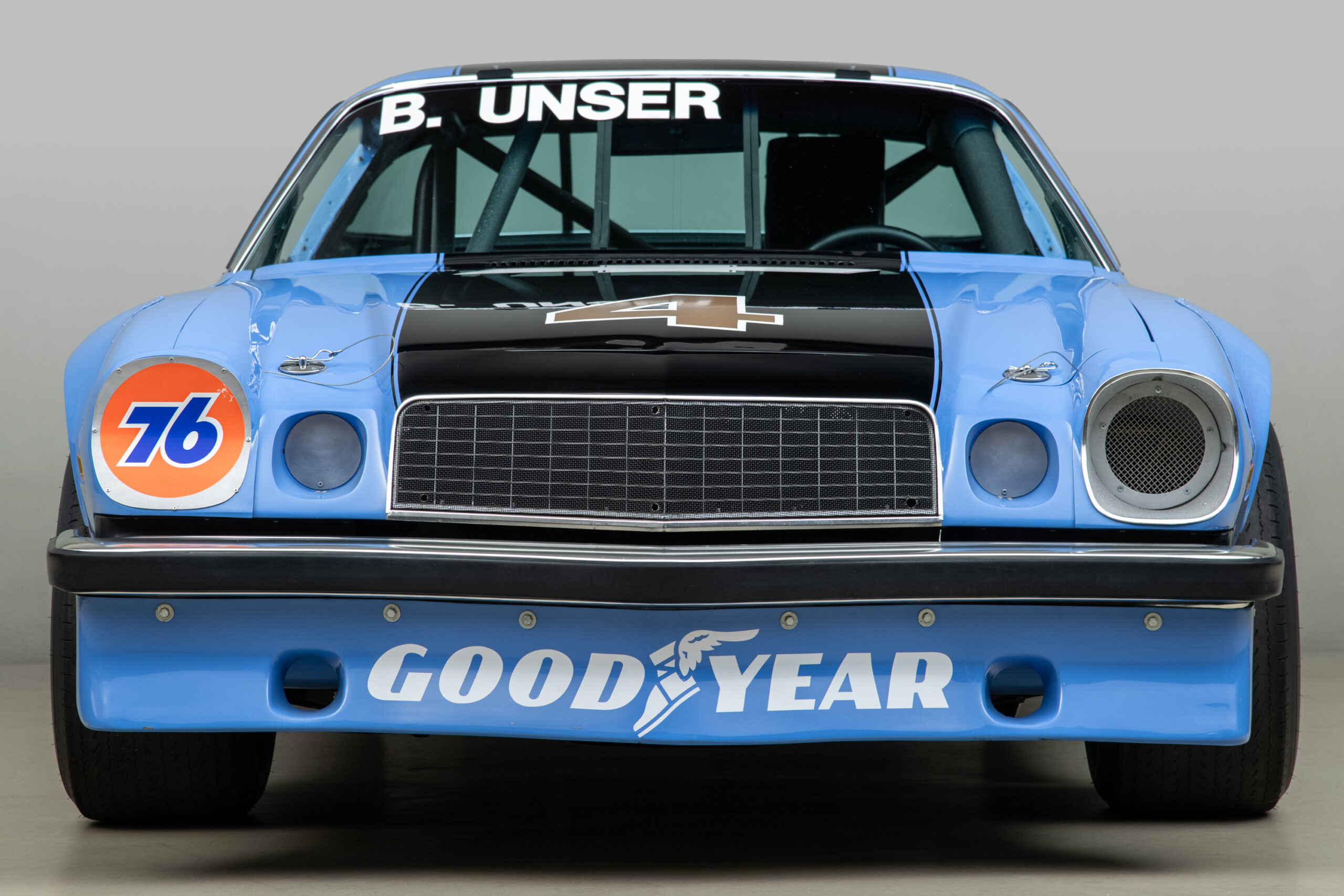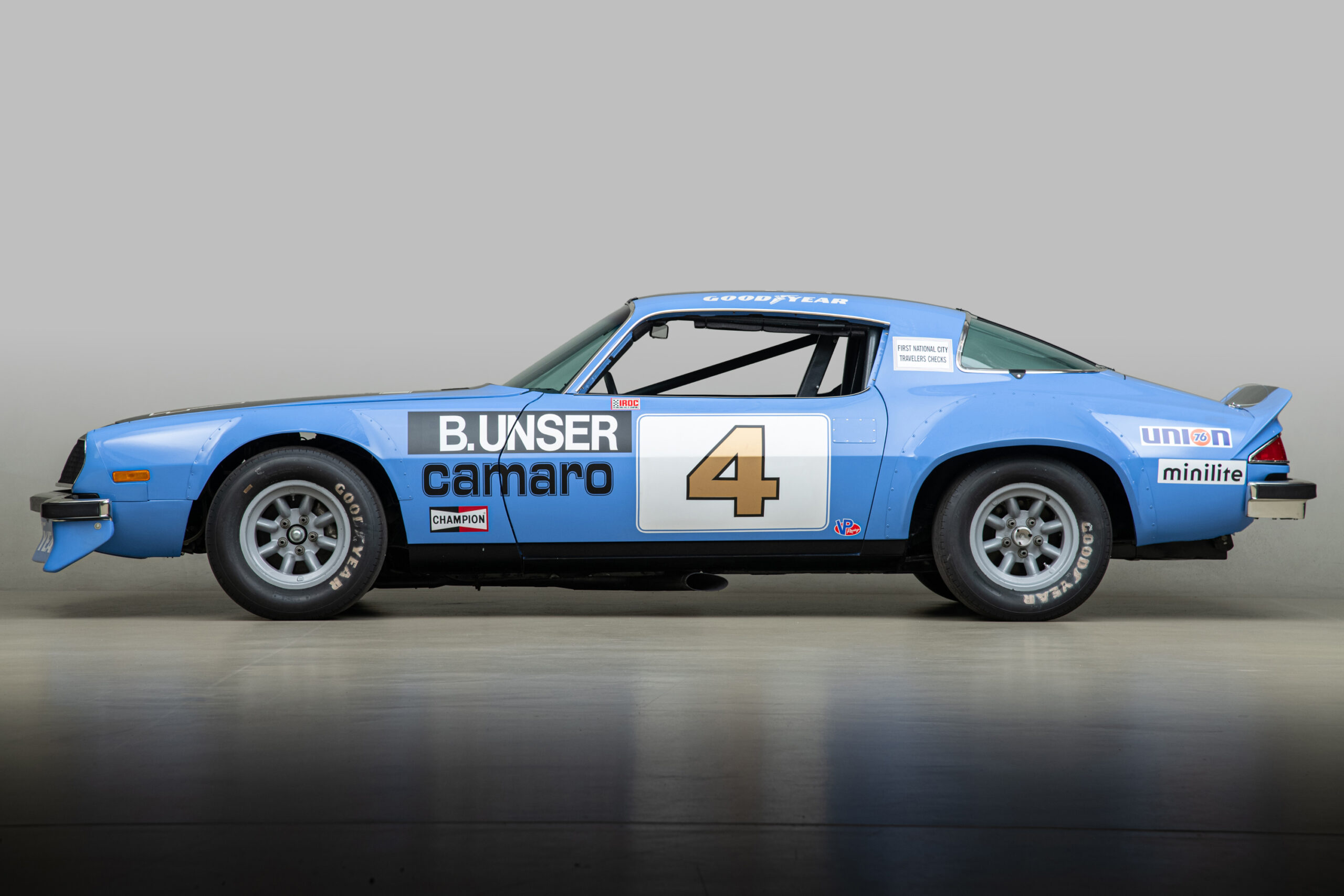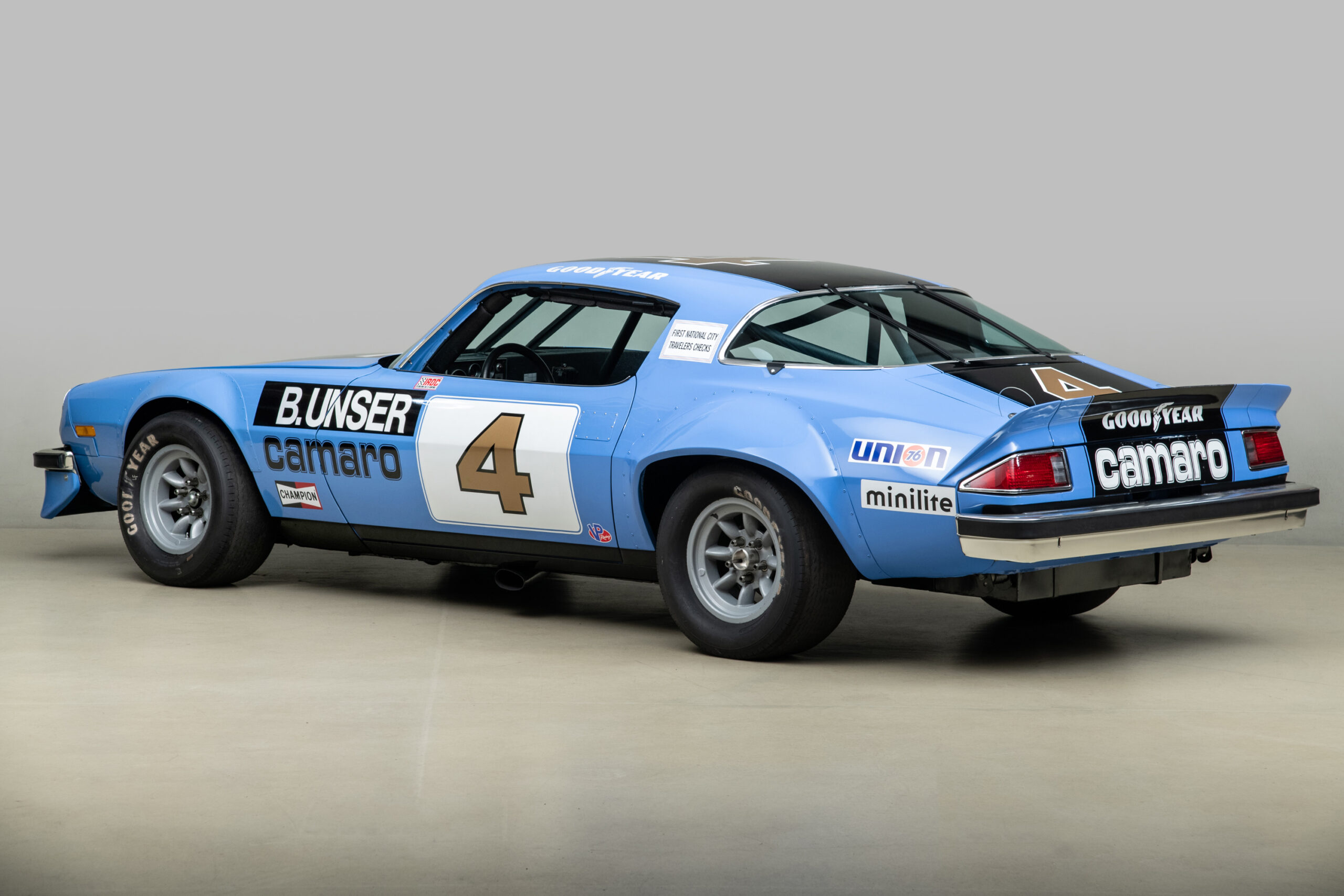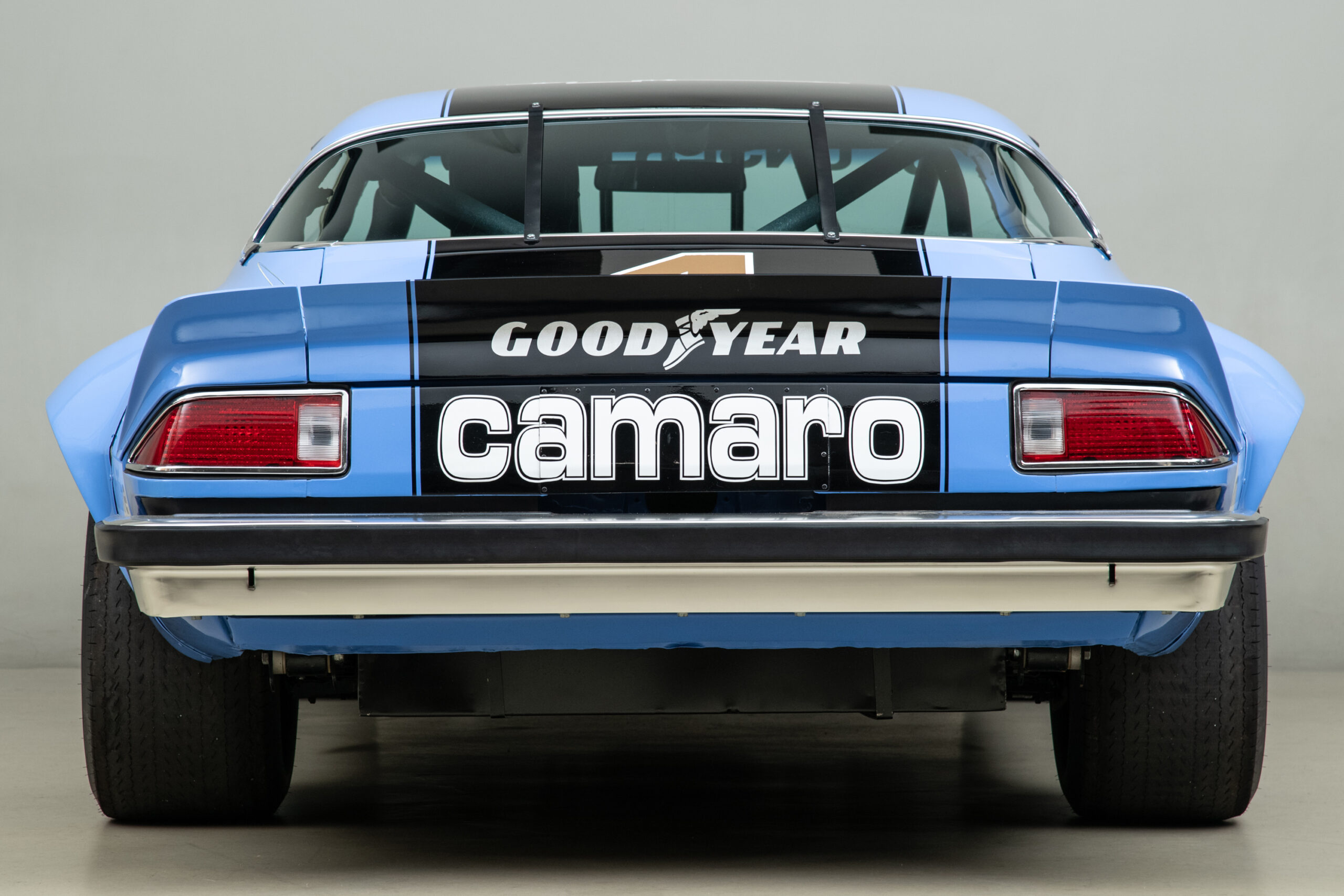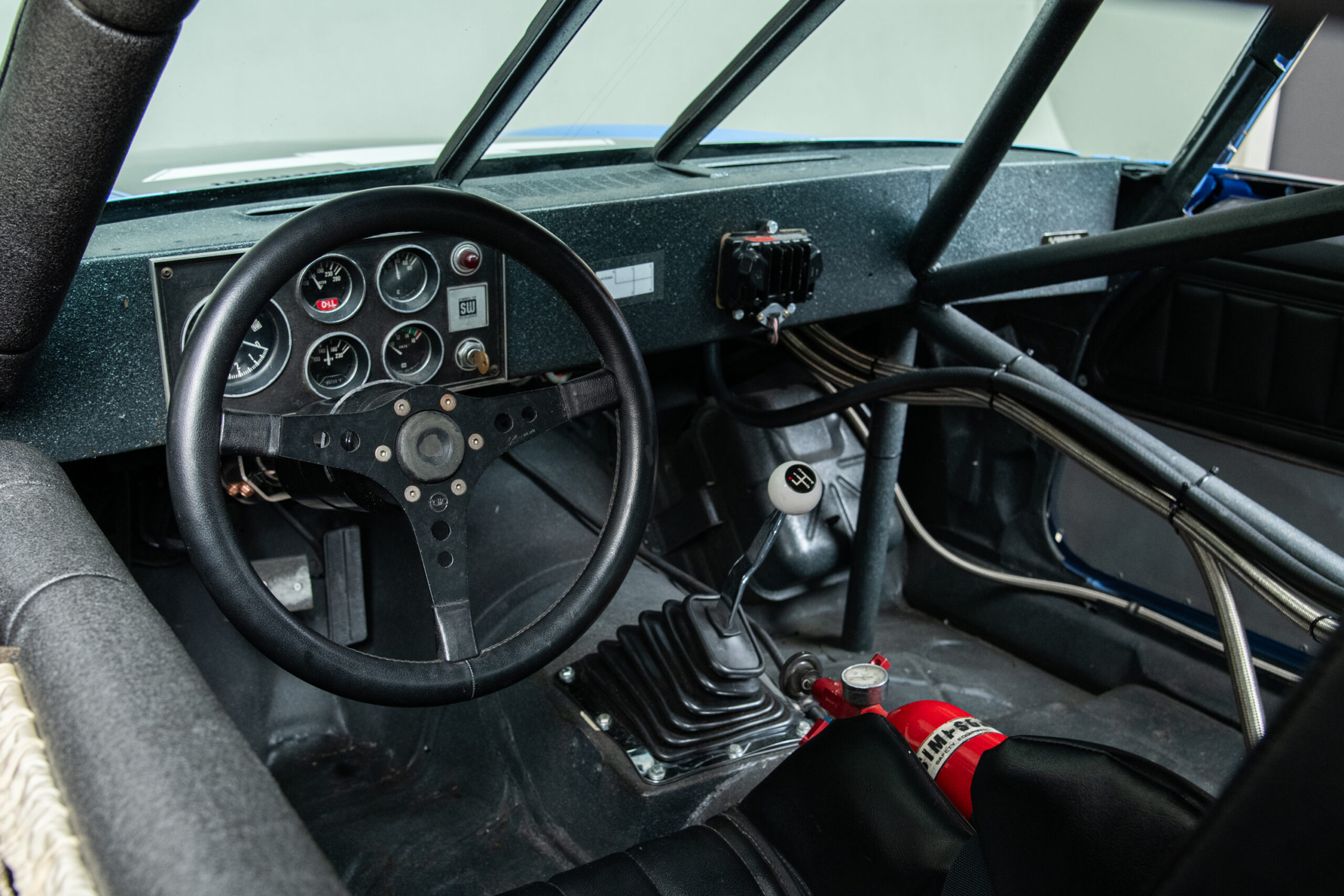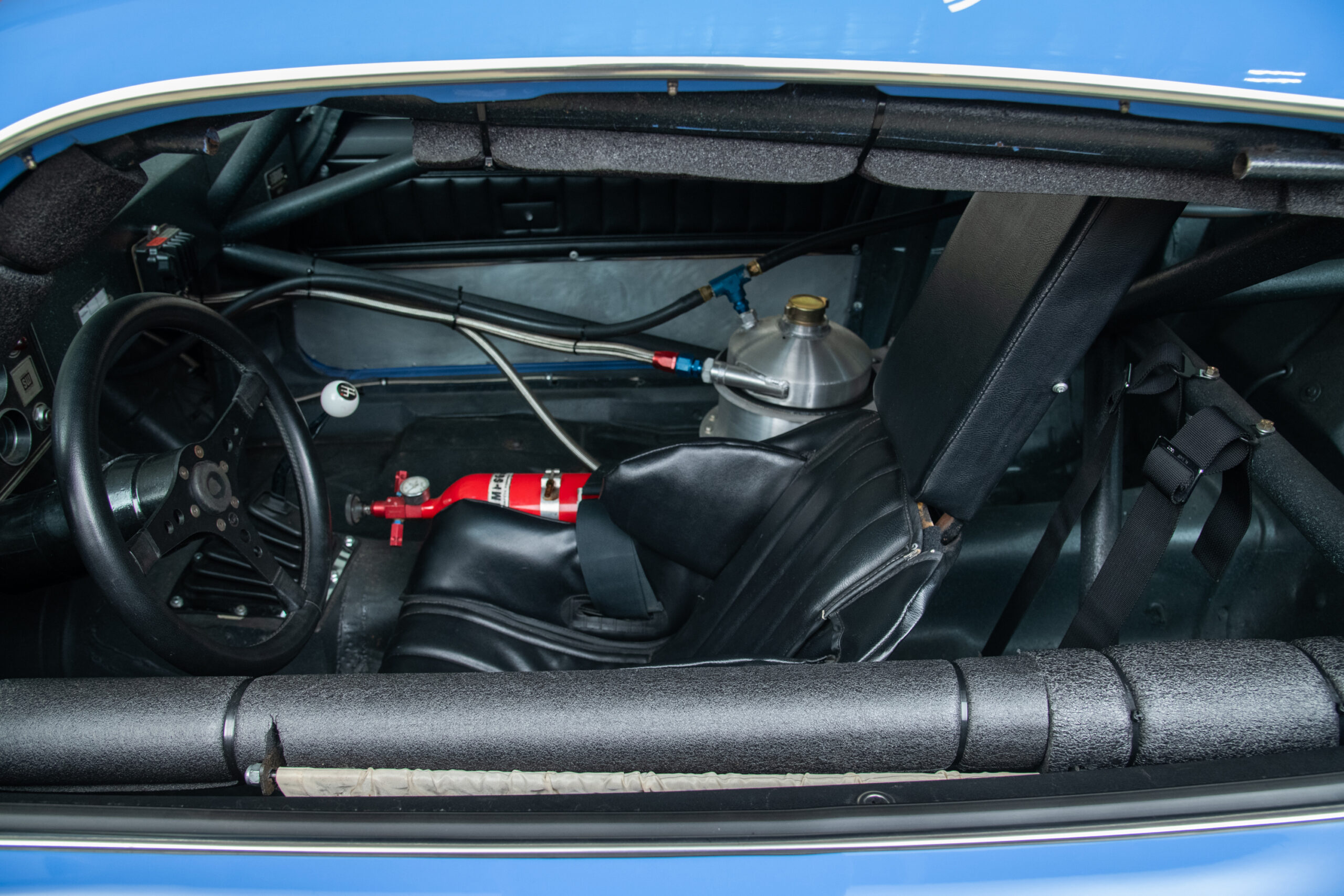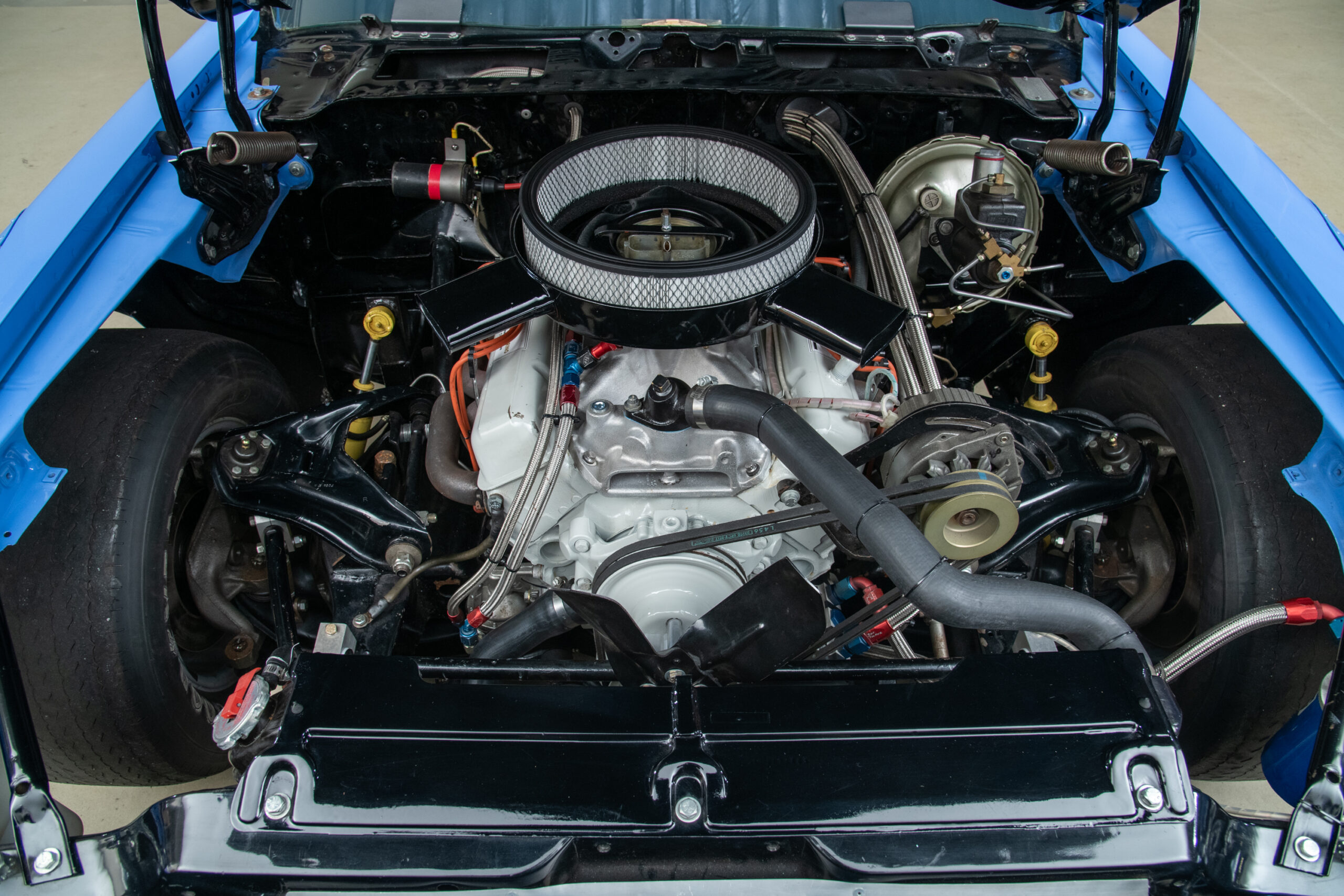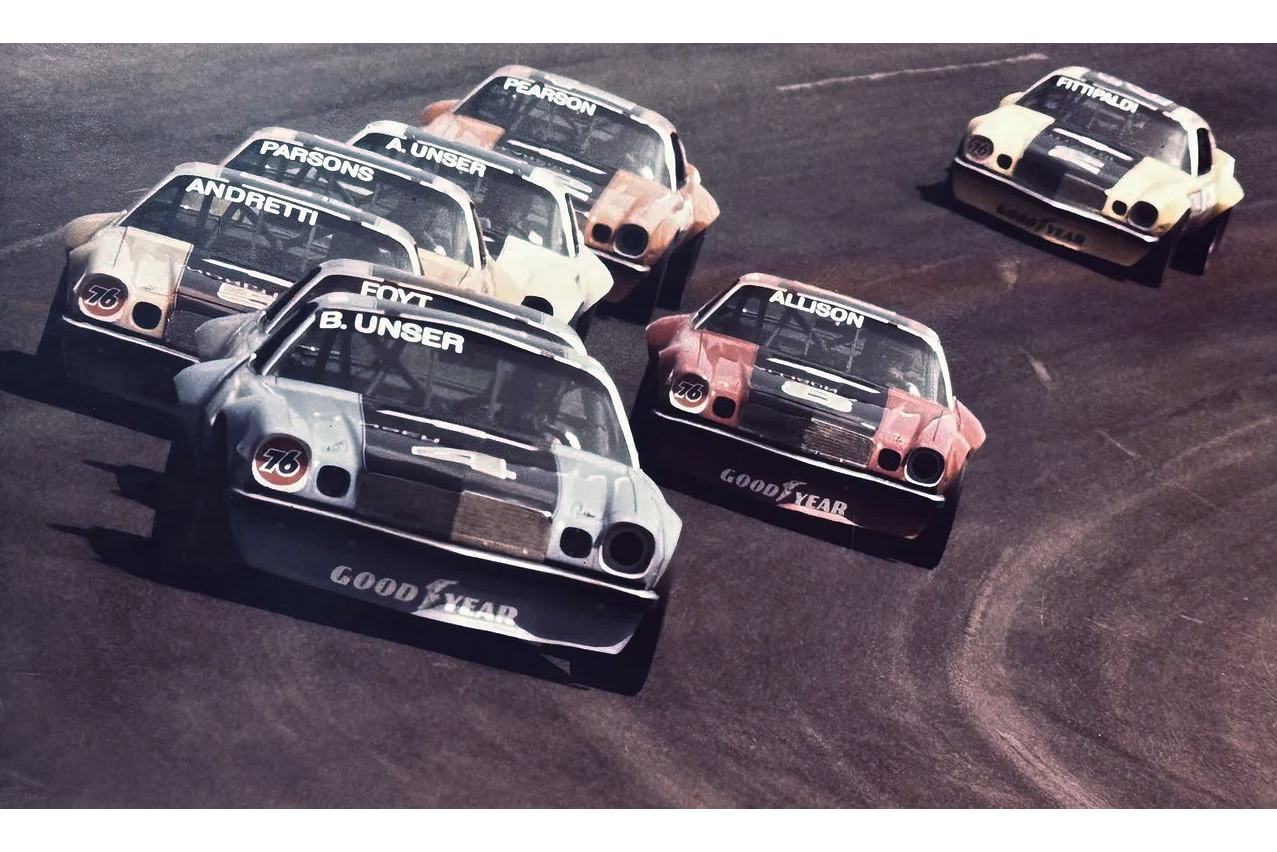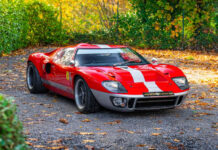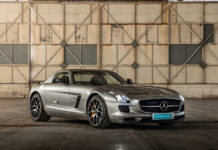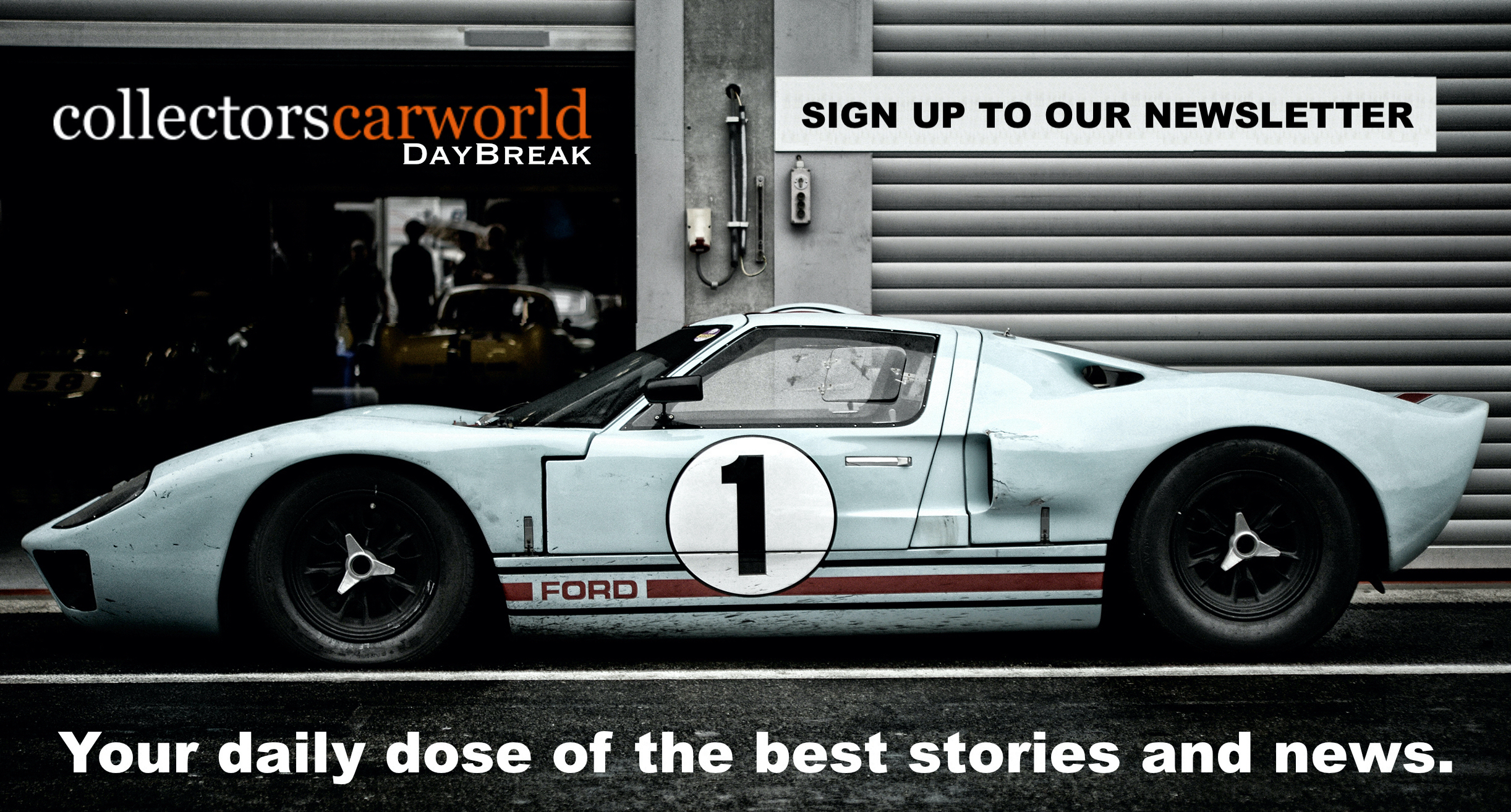Canepa is offering this Chevrolet Camaro IROC for sale.
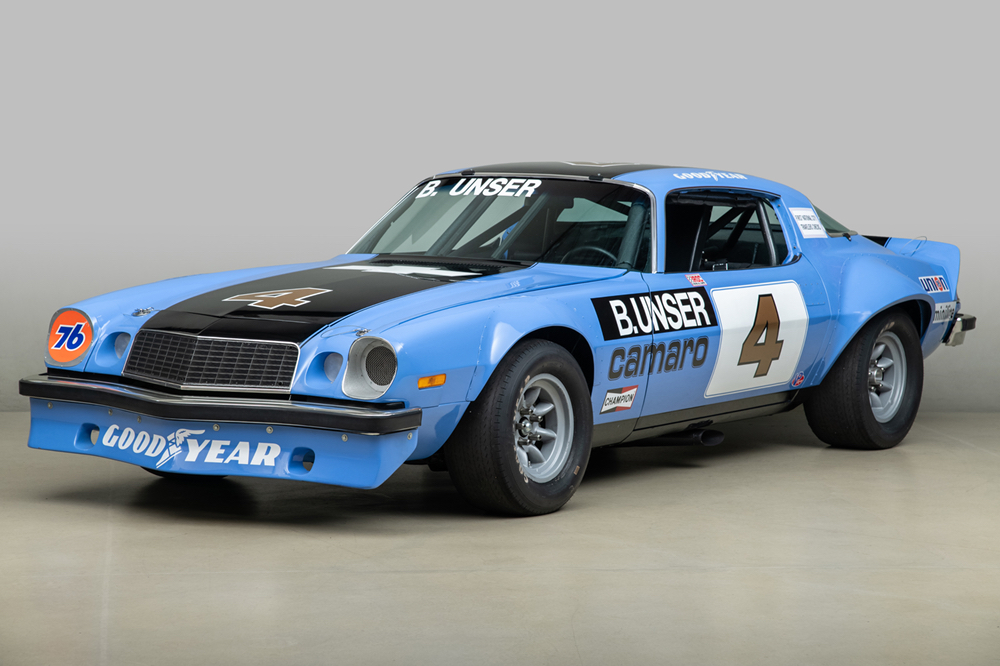
1975 Chevrolet Camaro IROC
VIN/Chassis: 1FQ87NZ753ABD
- Driven by F1 champion James Hunt, Brian Redman, Bobby Unser, Al Holbert, and Jody Scheckter
- Eligible for special inaugural 2025 Rolex Monterey Motorsports Reunion IROC class with past racing champions
- Race-prepped by Ray Evernham, in restored condition, eligible for multiple historic racing events
- 350 C.I.D. Chevrolet V8 engine – 440HP
- Muncie 4-speed manual transmission, Third Member 9-inch Ford rear end, Power Steering
- Complete with thorough and original IROC documentation
- IROC series founded by Roger Penske, Les Richter, and Mike Phelps
IROC’s Resurgence
Through a partnership of Ray Evernham and Rob Kauffman, the IROC trademark was revived to bring one of the most exciting series back to the forefront. With many of the former IROC race cars race-prepped by Ray Evernham Enterprises, these cars spanning from 1973 to 2006 are ready to be back on a track and used in the way they were designed to be. The 2025 Rolex Monterey Motorsports Reunion inaugural IROC racing class represents a rare opportunity to race alongside racing legends and those who raced the same cars in the original IROC series. These include Jeff Gordon, Danny Sullivan, Mark Martin, Bill Elliott, Ken Schrader, Bobby Labonte, Scott Pruett, Zak Brown, Bruce Canepa, and others.
The Quail, A Motorsports Gathering, will be hosting the IROC race cars as the Featured Racing Class on Friday August 15th, 2025 at the Quail Lodge, complete with a police escort from Laguna Seca through the mountains of Carmel Valley. With Rolex Monterey Motorsports Reunion signing on for 3 years of IROC racing classes just to start, the IROC racing series is seeing a resurgence unlike anything else, with a driver’s opportunity to racing among other racing legends and celebrities.
1975 Chevrolet Camaro IROC #4
The International Race of Champions (IROC), an American racing series promoted as the equivalent of an all-star game, was a unique and prestigious motorsport competition that ran for several decades, from 1974 to 2006. The goal was to bring together the best drivers from various driving series to compete in identically-prepared cars at some of the world’s most legendary tracks. With names racing such as Can-Am and Trans-Am champion Mark Donohue, F1 champion James Hunt, NASCAR legend and champion Dale Earnhardt, Indycar champion A.J.Foyt, Trans-Am, Can-Am champion George Follmer, and more legendary drivers were invited to join the racing championship to prove who was the best of the best.
The IROC series was founded in 1973 by Roger Penske, Les Richter, and Mike Phelps, wanting to create a championship that featured top drivers from a variety of racing categories and disciplines, such as Formula 1, IndyCar, NASCAR, and sports car racing. The goal? To create a series to determine the “champion of champions” by placing competitors in identically-prepared cars to level the field across the board. No secret additions, no extra power, no trick tuning, just pure raw driving ability. Still remembered as a unique and prestigious series that brought together some of the greatest drivers in motorsport, IROC created the concept of identifying the “champion of champions” and cemented it as a memorable era of racing history.
While the IROC concept seemed simple enough in theory, the implementation was slightly more difficult, especially when bringing together 12 top drivers and preparing 12 identical cars (with 3 additional spare cars) with equal performance in all aspects. Debuting in 1973 with Roger Penske, the series organizer, and the late Mark Donohue, the project supervisor and development driver, found their first cars with the help of their German counterparts. Porsche Carrera RSRs were the first cars used in the series and the first season was met with popular reception. However, there was a snag: the Porsches proved to be too expensive to build and maintain, and a suitable replacement was needed. Penske, with his ties to Chevrolet, found the next logical choice in the form of the 1974 Chevrolet Camaro. Fast and inexpensive to acquire and modify, the Camaro would end up being the platform of choice for the next 15 years.
Jay Signore, the project foreman, was given an almost insurmountable task of preparing 15 cars to look and perform like race cars, in just a span of 9 weeks. What resulted was tireless nights, and endless thrashing by Signore and his crew in Penske’s race shop in Reading, PA. Since time was in short supply during the deadline to produce these 15 cars, the Camaros were ordered in as many different colors as the factory offered to save time painting them, a clever and resourceful trick. Bodywork done in the name of racing was minimal, for simplicity and for time constraint reasons. To avoid the expensive narrowing of rear ends to accommodate large race tires, the fender wells were radiused and custom fender flares were pop-riveted to the body. While the rear spoilers were stock, the front air dams were fabricated and bolted directly to the bumper.
Safety was a primary concern, especially due to the nature of speed of which these cars were being built. Custom-made Simpson fuel cells were employed, along with roll cages, competition seats, harnesses, and window nets. A fire extinguisher was bolted directly to the driveshaft tunnel. Windshields were raced and reinforced to help overcome the extreme air pressure at speeds over 150 miles an hour. Mirrors, both inside and out, were stock. The doors remained functional, complete with interior trim panels, but were bolted shut for racing. The stock steering wheel was retained.
The team put a considerable amount of effort and thought into the chassis. To the dismay (and perhaps blasphemy) of many loyal Chevrolet fans, the IROC Camaros used Ford rear end units with full floating axles for reliability. Power to the rear end was transmitted through a Chevy M-22 “rock crusher” 4-speed manual transmission. The rear leaf-spring setup was standard and was retained, with leafs being added or removed based on track conditions. The stock brakes were mothballed in favor of upgraded Corvette units powered up by a master cylinder out of a Mico fork truck using a booster from a Chevy 454 station wagon. The stamped-steel A frames were left in space, but Corvette spindles were employed, with the front coil springs frequently swapped out based on track conditions, much like the rear end leaf springs.
8” Minilite Mag wheels supported brake cooling and shed weight, an invaluable contribution since a race-ready IROC Camaro tipped the scales at a not-so-featherweight 3,600 pounds.
This Maxi-Blue #4 Chevrolet Camaro IROC debuted in IROC III at the Michigan International Speedway in September of 1975, with F1 champion James Hunt piloting it. The car’s best finish was captured by NASCAR champion Benny Parsons with a 5th place at Riverside in 1975. Other legendary drivers from sports cars and Indy cars such as Brian Redman, Bobby Unser, Al Holbert, and Jody Scheckter complete this car’s impressive lineup of past drivers.
In August of 2025, Rolex Monterey Motorsports Reunion will play host to a special IROC class of racing, featuring legendary IROC competitors, modern racing legends, and displays of over 20 historic IROC cars. This #4 1975 Chevrolet Camaro IROC has been race prepped by Ray Evernham Enterprises, IROC co-owner, is in restored condition and is eligible for this year’s 2025 Rolex Monterey Motorsports Reunion, future IROC series classes, along with other historic race events nationwide.
The IROC series represented a unique and special snapshot in racing history, gathering the best of the best to compete against one another on equal footing. Seeing F1 champions race against Indy car champions, along with NASCAR drivers rubbing against sports car drivers. A series as unique as IROC may never take place again, but with this race-ready #4 Chevrolet Camaro you can drive and enjoy a piece of motorsport history.
Click here for further information
collectorscarworld is partnering with the most renowned classic car specialists and dealer-ships in the world. We always offer selected rare and sought-after collectors cars and supercars for sale and every day a special car is featured for one of our partners. The passion for classic cars is diverse, sometimes it concerns the beauty of forms that can be admired at a concours, sometimes it is the smell of rubber , old leather and gasoline at a racing event or trip in the sunset.
Or its a classic car you have great memories with or which your parents owned a longtime ago. Classic cars and supercars are an expression of the lifestyle that someone shares with other petrolheads, and which is immortal, enduring and always a lot of fun. If you are looking for a special car or need support in the evaluation and history of cars, please contact us at info@collectorscarworld.com


Interested in further “Cars For Sale”? Click here.

